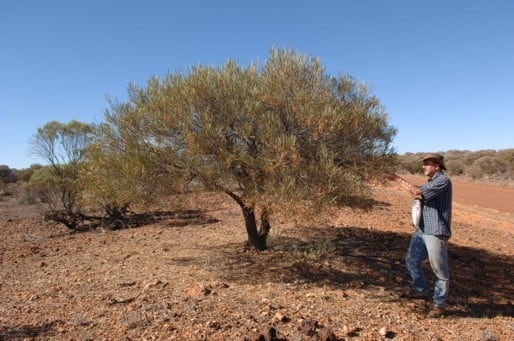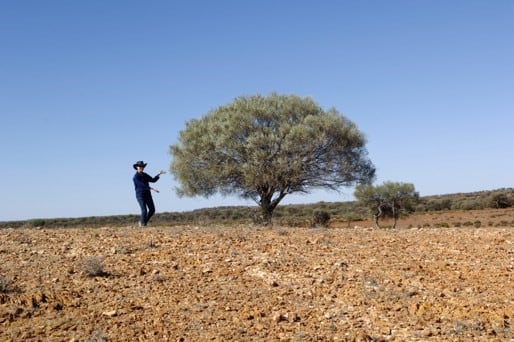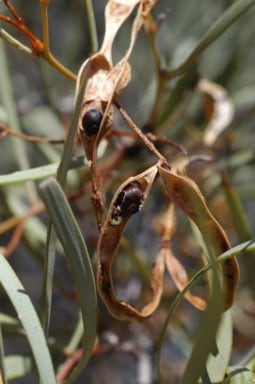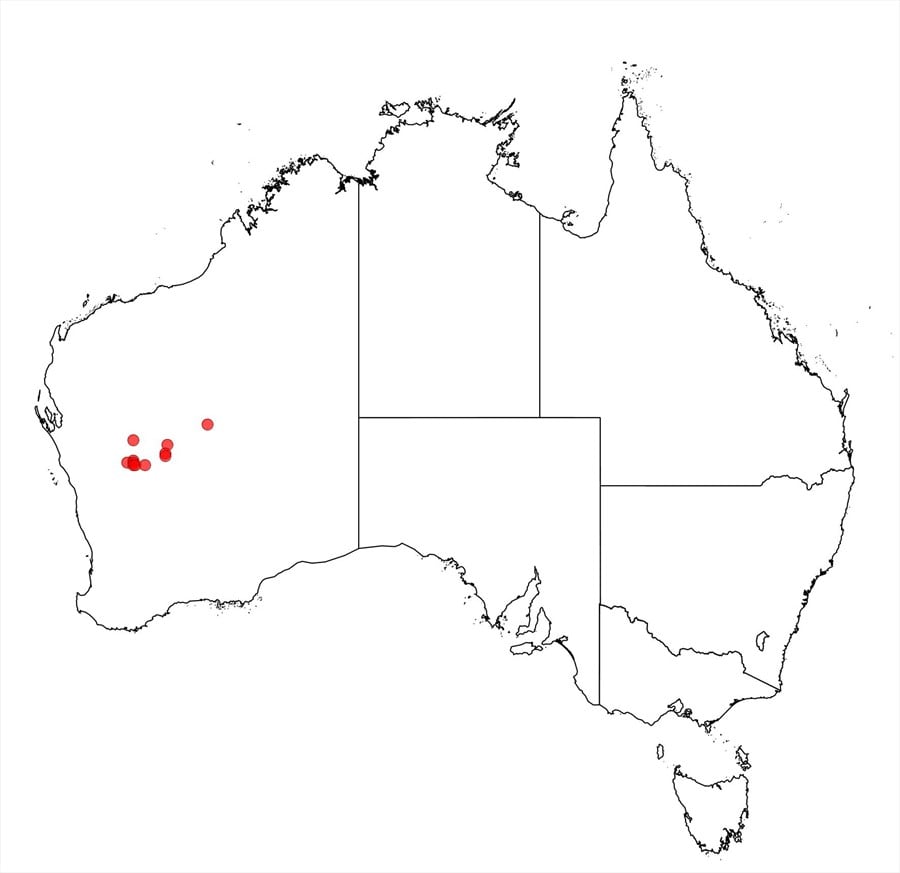Acacia burrowsiana Maslin
WATTLE
Acacias of Australia
Common Name
Burrows’ Snakewood, Gizzard Wattle
Family
Fabaceae
Distribution
Occurs in a few disjunct populations mostly confined to the Murchison region, W.A.; known from Mt Magnet, Lake Mason Stn (near Sandstone), Beebyn Stn (near Cue) and Lorna Glen Cons. Park (NE of Wiluna).
Description
Shrub or tree 2–5 (–6) m high, gnarled, main branches rather contorted and ±spreading horizontally. Branchlets ±glabrous. New shoots densely appressed hairy, the hairs golden but soon aging white. Phyllodes erect, narrowly linear to linear oblanceolate or linear elliptic, acute or short-acuminate, straight to shallowly incurved, 7–13 cm long, (2–) 3–5 (–7) mm wide, sub-rigid, commonly coarsely pungent, ±glabrous, pale green to subglaucous, with numerous, indistinct, parallel nerves; glands 3–4, the lowermost (0–) 2–10 mm above pulvinus. Inflorescences mostly simple; peduncles 2–7 mm long, glabrous; spikes 10–20 mm long, loosely flowered; receptacle glabrous. Flowers 4-merous; sepals ¼ or less length of the petals, united, glabrous. Pods moniliform, curved to irregularly sigmoid or twisted, (5–) 6–8 (–13) cm long, 5–7 mm wide, thinly crustaceous or (just prior to maturity) ±subwoody, glabrous. Seeds longitudinal, elliptic to widely elliptic or ±depressed-globose, (4–) 6–7 mm long, brown to ±blackish; funicle/aril short.
Phenology
Flowers Oct.–Nov.
Habitat
Grows commonly in red-brown loam on plains or low rocky rises, often with a weathered gypsum duricrust at varying depths.
Specimens
W.A.: north of Mt Magnet, B.R.Maslin 7337 (K, MEL, PERTH); north of Sandstone B.R.Maslin 8968 (NSW, PERTH); Lorna Glen Cons. Park, J.E.Reid 2 (PERTH).
Notes
Published since the Flora of Australia treatment and in use in the Australian Plant Census.
Seemingly most closely related to the more northerly distributed A. xiphophylla which has a similar ‘Snakewood’ growth form but which differs most obviously in its generally broader phyllodes, appressed-hairy peduncles and receptacles, longer spikes, mostly 5-merous flowers, often golden hairy calyx and flat and normally wider pods. May superficially resemble a rare flat phyllode form of A. intorta, which is most readily distinguished by its pungent phyllodes and flat pods.
FOA Reference
Flora of Australia Project: Nuytsia 17: 241–245, fig. 1 (2007)
Author
B.R.Maslin, J.Reid
This identification key and fact sheets are available as a mobile application:
URL: https://apps.lucidcentral.org/wattle/
© Copyright 2018. All rights reserved.
















